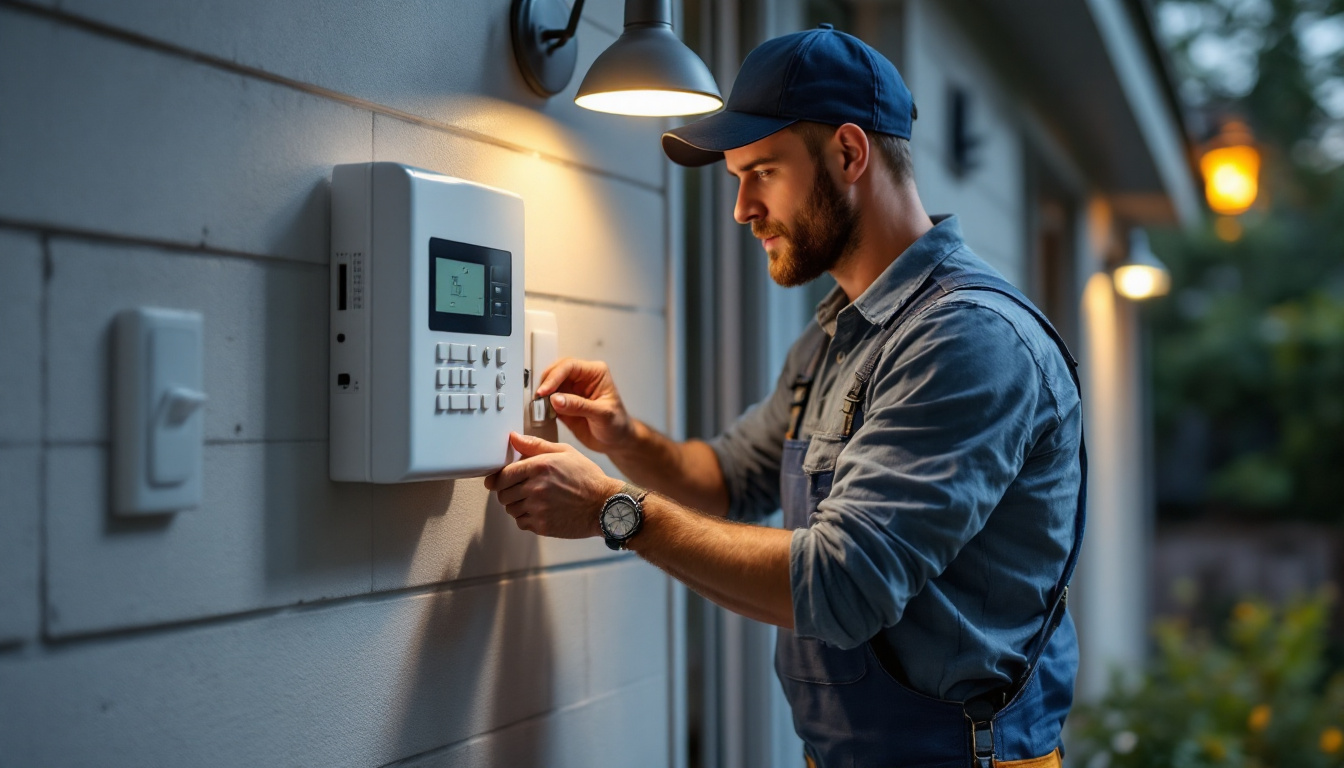
Lighting contractors often encounter various questions regarding ballast lights, a crucial component in many lighting systems. Understanding these components, their functions, and their applications can significantly enhance a contractor’s ability to provide effective solutions to clients. This article aims to address common inquiries about ballast lights, offering insights that can aid in the decision-making process for lighting projects.
Ballast lights are essential fixtures used in fluorescent and HID (High-Intensity Discharge) lighting systems. They serve as a stabilizing component, regulating the current and voltage supplied to the lamp. Without a ballast, these types of lights would not function correctly, leading to flickering or complete failure.
In addition to providing the necessary electrical conditions for the lamp to ignite, ballasts also help to manage the power consumption of the lighting system. By ensuring that the lamp receives the appropriate amount of energy, ballasts contribute to the overall efficiency and longevity of the lighting installation. This efficiency is particularly important in commercial settings, where lighting can account for a significant portion of energy costs. By choosing the right ballast, businesses can not only reduce their energy bills but also minimize their environmental impact.
There are primarily two types of ballasts: magnetic and electronic. Magnetic ballasts have been around for decades and operate using electromagnetic induction. They are typically heavier and larger than their electronic counterparts but are known for their reliability. These ballasts are often favored in applications where durability is paramount, such as in industrial settings or outdoor fixtures that may be exposed to harsh weather conditions.
On the other hand, electronic ballasts use electronic circuits to control the current and voltage. They are generally more energy-efficient, lighter, and can provide better performance, such as flicker-free operation and improved color rendering. Understanding the differences between these types is crucial for contractors when selecting the appropriate ballast for a specific application. Furthermore, electronic ballasts often come equipped with advanced features like dimming capabilities and compatibility with smart lighting systems, making them an attractive option for modern installations. As technology continues to evolve, the shift towards electronic ballasts is likely to accelerate, driven by the increasing demand for energy-efficient and sustainable lighting solutions.
The operation of a ballast is relatively straightforward. When power is supplied to the ballast, it begins to regulate the electrical current flowing to the lamp. Initially, the ballast provides a high voltage to ignite the lamp, which is essential for starting the lighting process. Once the lamp is lit, the ballast reduces the voltage to a stable level, allowing the lamp to operate efficiently.
In addition to starting and regulating the lamp, ballasts also protect the lamp from voltage spikes and fluctuations. This protective feature is vital in prolonging the lifespan of the lighting system and maintaining consistent performance. Without a ballast, the lamp could experience premature failure due to inconsistent power supply, leading to increased replacement costs and downtime.
Ballasts can be found in various types of lighting systems, including fluorescent, HID (high-intensity discharge), and LED fixtures. Each type of ballast is designed to meet the specific requirements of the lamp it supports. For instance, electronic ballasts are commonly used with fluorescent lamps because they provide better energy efficiency and reduce flickering compared to traditional magnetic ballasts. This advancement in technology not only enhances the performance of the lighting system but also contributes to a more pleasant visual environment.
Ballasts play a critical role in the functionality and efficiency of lighting systems. They not only ensure that lamps operate correctly but also contribute to energy savings and reduced maintenance costs. By preventing flickering and providing a stable light output, ballasts enhance the quality of illumination in various settings. This is particularly important in commercial environments, where consistent lighting can impact productivity and employee satisfaction.
Moreover, with the growing emphasis on energy efficiency and sustainability, selecting the right ballast can lead to significant reductions in energy consumption. This not only benefits the environment but also results in cost savings for clients, making it a win-win situation for contractors and their customers. The shift towards smart lighting solutions has also introduced advanced ballasts that can be integrated with building management systems, allowing for automated control of lighting based on occupancy or daylight levels. Such innovations are paving the way for more intelligent and adaptive lighting solutions that further enhance energy efficiency and user experience.
Despite their importance, ballast lights can encounter several issues that may affect their performance. Understanding these common problems can help contractors diagnose and resolve issues more effectively.
One of the most common issues with ballast lights is flickering. This can be caused by a variety of factors, including aging ballasts, poor connections, or incompatible lamps. Flickering not only diminishes the quality of light but can also lead to increased wear on the lamp, reducing its lifespan.
To address flickering, contractors should first inspect the ballast and connections. If the ballast is old or malfunctioning, replacing it with a new, compatible model may be necessary. Additionally, ensuring that the lamp and ballast are compatible can prevent flickering issues from arising in the first place.
Ballast failure is another common issue that contractors may face. Symptoms of a failing ballast can include dim lighting, buzzing sounds, or lights not turning on at all. In many cases, a failed ballast will need to be replaced to restore proper functionality.
Regular maintenance and inspections can help identify potential ballast failures before they occur. Keeping track of the age and performance of ballasts can allow contractors to proactively replace them, ensuring that lighting systems remain operational and efficient.
Selecting the appropriate ballast for a specific lighting application is crucial for optimal performance and energy efficiency. Several factors should be considered when making this decision.
One of the first considerations when choosing a ballast is compatibility with the lamps being used. Different lamps require specific types of ballasts to function correctly. For example, fluorescent lamps may require either an electronic or magnetic ballast, while HID lamps typically need a specific HID ballast.
Contractors should always refer to the manufacturer’s specifications for both the lamp and ballast to ensure compatibility. Using an incompatible ballast can lead to poor performance, increased energy consumption, and reduced lamp life.
Energy efficiency is another critical factor to consider. Many ballasts come with energy efficiency ratings that indicate their performance in terms of energy consumption. Selecting high-efficiency ballasts can lead to significant energy savings over time, making them a more cost-effective choice for clients.
Contractors should also be aware of any local energy codes or regulations that may dictate the minimum efficiency standards for ballasts. Staying informed about these requirements can help ensure compliance and provide clients with the best possible solutions.
Proper installation of ballast lights is essential for optimal performance and longevity. Adhering to best practices can help prevent common issues and ensure that lighting systems function as intended.
One of the most important best practices is to follow the manufacturer’s installation guidelines. Each ballast may have specific requirements for wiring, mounting, and operation. Adhering to these guidelines can help prevent issues and ensure that the lighting system operates efficiently.
Contractors should also be aware of the electrical codes and regulations in their area. Compliance with these standards is essential for safety and can help avoid potential legal issues down the line.
Regular maintenance and inspections are crucial for the longevity of ballast lights. Contractors should encourage clients to schedule routine checks of their lighting systems to identify potential issues before they escalate. This proactive approach can help maintain optimal performance and reduce the likelihood of unexpected failures.
During inspections, contractors should pay close attention to the condition of the ballasts, wiring, and lamps. Any signs of wear or damage should be addressed promptly to prevent further complications.
As technology continues to evolve, so does the field of lighting and ballast systems. Emerging trends are shaping the future of ballast technology, offering new opportunities for contractors and their clients.
One of the most exciting trends is the development of smart ballasts. These advanced systems can communicate with other devices, allowing for enhanced control and automation of lighting systems. Smart ballasts can adjust output based on occupancy, daylight availability, or specific user preferences, leading to increased energy efficiency and improved user experience.
Contractors should stay informed about the latest advancements in smart ballast technology, as these systems can provide significant benefits to clients looking to modernize their lighting solutions.
Another trend is the integration of ballast systems with renewable energy sources, such as solar power. As more clients seek sustainable solutions, lighting contractors may find opportunities to incorporate these technologies into their projects. By combining energy-efficient ballasts with renewable energy sources, contractors can help clients reduce their carbon footprint and achieve greater energy independence.
Understanding these trends can position contractors as leaders in the industry, enabling them to offer innovative solutions that meet the evolving needs of their clients.
Ballast lights are a fundamental component of many lighting systems, and understanding their functions, types, and common issues is essential for lighting contractors. By addressing common questions and concerns, contractors can enhance their expertise and provide better solutions to their clients.
From selecting the right ballast to ensuring proper installation and maintenance, a comprehensive understanding of ballast lights can lead to improved performance, energy efficiency, and client satisfaction. As technology continues to advance, staying informed about emerging trends will further empower contractors to deliver cutting-edge lighting solutions.
Ready to elevate your lighting projects with the best ballasts and fixtures on the market? Look no further than LumenWholesale, where we provide lighting contractors with exceptional, spec-grade lighting products at unbeatable wholesale prices. Our commitment to quality and affordability ensures that you have access to a vast selection of reliable lighting solutions that meet the highest industry standards. Plus, with the convenience of free shipping on bulk orders, you can enjoy premium lighting without the extra costs or hassle. Don’t compromise on performance or price. Wholesale Lighting at the Best Value is just a click away. Choose LumenWholesale for your next project and experience the difference quality lighting can make.

Discover essential compliance guidelines and practical insights for lighting contractors working with outdoor timer switches.

Discover the top strategies lighting contractors use to enhance spaces with drop ceiling light fixtures.

Discover how Maxlite LED lamps can boost lighting efficiency by up to 80%. Learn expert tips to optimize performance, save energy, and reduce costs today!.

Discover essential tips and expert advice tailored for lighting contractors on selecting and installing switches and receptacles.